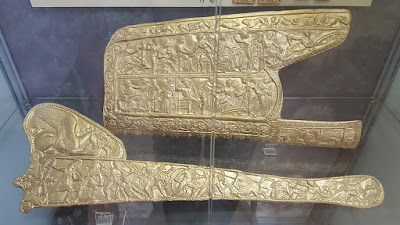In her paper, "Fish and Fishing in the Roman World," Annalisa Marzano of the University of Reading observes:
"On the whole, fishermen in antiquity had a low social status and although fishing could be the topic of literary works, of mosaics in elite dwellings, and a recreational activity, the ordinary men who engaged in large-scale fishing and supplied the many fish-salting establishments of the Roman world remain almost invisible. It seems very likely that the same individuals engaged both in fishing and salting the fish, but to date we do not have definite evidence. There are only few surviving attestations of groups of fishermen from the Roman Mediterranean. Some clearly refer to proper collegia, which seemed to have worked in collaboration with the fishmongers, who sold only fresh fish. Others were business partnerships (societates) formed in order to operate large-scale fishing, and, possibly, also fish-salting operations."
Sought after fish that could command high prices were large specimens of bass, sea bream, mullet, and gilthead while anchovies and smaller fish species were considered affordable by people of modest means. Marine fish was, generally, more sought after than freshwater fish and, in terms of status and monetary value, fresh fish was superior to preserved fish. In a meal consisting of more than one dish, preserved fish was mainly consumed as appetiser, while fresh fish could be either the main dish or, especially for small types of fish, also feature among the appetisers.
Of course location played an important role in whether fresh fish was readily available or preserved fish was more often part of a Roman's meal. Sewer analysis from Herculaneum, primarily a port city, indicate consumption of fresh seafood across social strata. However, for inland agricultural laborers, Marcus Aurelius in a letter to his friend Fronto points out that, at least on one of his imperial estates, small preserved sardines, boiled beans, and onions were the foods eaten by the agricultural laborers. Salted fish was also served to ship crews, as attested to in an excavation of sixty small vessels in the Rhône at Arles, and to the Roman army.
Culinary "fashion" also changed over time. During the Republican period, a sturgeon was prized because it was a non-Mediterranean species. It subsequently went out of fashion for a time until it was once more considered worthy of an emperor's table. The social value of fish as a gift also seemed to be disputable. Martial ridicules a social climber named Papylus, who tries to impress people by sending gifts of fresh mullets and oysters, while he dines on much simpler fare at home. In contrast, a military verteran named Tiberius Bellenus Gemellus selected a gift of fresh fish and one artaba (about 27 liters) of olives for an Egyptian official whose favor he wished to gain.
To read more of Marzano's paper that appeared in the Journal of Maritime Archaeology:
https://link.springer.com/article/10.1007/s11457-018-9195-1
Image: Bollard with a Fisherman, early 5th century CE, Late Roman or Byzantine, at the Metropolitan Museum of Art. This young fisherman, wearing a tunic and boots, stands before a weighted bollard, used to tie large boats to a wharf. With a net cast over his shoulder, he holds a rudder in his left hand. The cleat itself, used to secure a line from a boat, is formed by two fingers protruding from the bollard. Image courtesy of the museum (digitally enhanced).
If you enjoyed this post, never miss out on future posts by following me by email!

















































